Delhi charges one of the highest tariffs for commercial load and industrial – average over Rs 10.00 per kWh
Delhi charges one of the highest tariffs for commercial load and industrial – average over Rs 10.00 per kWh
As per the tariff order of DERC for the year 2014-15, the variable Delhi’s electricity tariff for the commercial and industrial categories for the year 2014-15 are in excess of Rs 9.00 per kWh. A revenue deficit surcharge is imposed on the fixed and variable charges as per the orders of DERC and the Supreme Court ruling.
The table below shows the break-up of Delhi’s electricity tariff for domestic, commercial and industrial categories.
| Energy Charges (Rs per kWh) | Electricity Duty (Rs per kWh) | Revenue deficit surcharge of 8% | Variable Charges (Rs per kWh) | |
| Non Domestic | ||||
| Up to 10 kW | 8.80 | – | 1.08 | 9.50 |
| Between 10 kW(11kVA) – 100 kW (108 kVA) | 9.44 | – | 1.08 | 10.20 |
| Greater than 100 kW / 108 kVA (400 volts supply) (No Supply on LT for load > 215 kVA) | 11.06 | – | 1.08 | 11.94 |
| Greater than 100 kW / 108 kVA (11 KV supply) | 9.33 | – | 1.08 | 10.08 |
| Small Industrial Power (SIP) [less than 200kW/215 kVA] | ||||
| Up to 10 kW | 8.45 | – | 1.08 | 9.13 |
| Between 10 kW(11kVA) and 100 kW (108 kVA) | 8.78 | – | 1.08 | 9.48 |
| Greater than 100 kW / 108 kVA (400 volts) (No Supply on LT for load > 215 kVA) | 10.56 | – | 1.08 | 11.40 |
| Industrial Power on 11 kV Single Point Delivery for Group of SIP Consumers | 7.89 | – | 1.08 | 8.52 |
| Large Industrial Power (LIP) (Supply at 11 kV and above) | 8.22 | – | 1.08 | 8.88 |
Surcharge
The fuel adjustment surcharge or power purchase cost adjustment charges (PPAC) has been set at zero for the time being in Delhi as shown above. However DERC has already passed an order on 13th Nov 2014 to increase the PPAC to 2.5% for TDPPL, 4.5% for BRPL and 7.0% for BYPL. However, the order was suspended due to reasons related to lack of complete information on fuel cost from various generators. Once implemented, the PPAC would be charged on fixed and variable charges both which would lead to an increase of tariff from 20 paise to 70 paise per kWH all consumer categories.
The Delhi’s electricity tariff for the domestic consumer categories at various levels of consumption are as follows.
| Energy Charges (Rs per kWh) | Electricity Duty (Rs per kWh) | Revenue deficit surcharge of 8% | Variable Charges (Rs per kWh) | |
| Energy Charges (Rs per kWh) | Electricity Duty (Rs per kWh) | Revenue deficit surcharge of 8% | Variable Charges (Rs per kWh) | |
| Domestic for > 5 KW connected load | ||||
| Units consumed 500 | 5.44 | – | 1.08 | 5.88 |
| Units consumed 1000 | 6.53 | – | 1.08 | 7.05 |
| Units consumed 1500 | 7.18 | – | 1.08 | 7.76 |
The Delhi’s electricity tariff for the domestic category remains low however as all the consumers get the benefit of telescopic tariffs in the state.
Delhi Discoms have already filed the petition for increasing the Delhi’s electricity tariff for the year 2015-16 which is currently being reviewed by DERC.
Given such a high variable Delhi’s electricity tariff, the roof top solar solution provides a very attractive proposition to save the energy cost from immediate effect.
Suggested Articles
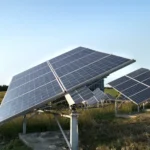
Latest Solar Mounting Structures: Smarter, Stronger, and More Efficient
Learn how the latest solar mounting structures in 2025 improve efficiency, reduce costs, and power the future of solar installations.
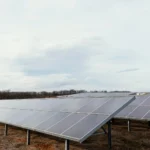
100 kW Solar Power Plant Cost in Haryana: The Ultimate Guide to the Best Rate Per Watt
Explore the 100 kW solar power plant cost in Haryana for 2025. Learn about pricing, government subsidy options, and how much you can save with solar energy.
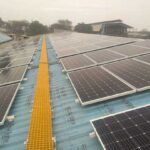
UP Discoms Propose 9.21% Electricity Tariff Hike for 2015-16
Uttar Pradesh Discoms propose a 9.21% increase in electricity tariffs for 2015-16, impacting residential, commercial, and industrial consumers across the state.
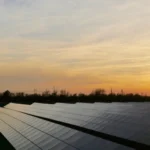
1 MW Solar Plant Cost in Haryana | A Complete Guide
Planning a 1 MW solar power plant in Haryana? This guide covers complete 2025 cost details, subsidy schemes, ROI, and savings potential for industrial users.
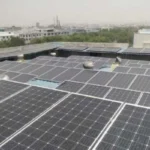
Haryana and UP Face Delays in Solar Net Metering Approvals
Net metering for rooftop solar in Haryana and Uttar Pradesh faces procedural delays, affecting solar adoption and efficiency for residential and commercial consumers
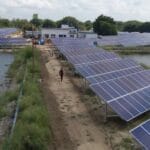
Demystifying Battery Backup: Everything You Need to Know
Battery backup is essential for uninterrupted power at home and in industries. This guide explains different types of battery backup systems, how they work, their benefits, and tips to choose the right one for reliable energy storage.

Solar Power Set to Overtake Coal as World’s Largest Energy Source in Four Years
Solar power has come a long way in the past decade, moving from being an also-ran to one of the major players in the global energy race. According to the International Energy Agency, next year, solar photovoltaic capacity will surpass hydropower, followed by gas-fired generation in three years and coal in four years.

Everything You Should Know About Solar Batteries
Discover how solar batteries store excess energy, maximize your solar system’s efficiency, and provide reliable power during outages. Learn about the types, benefits, lifespan, and maintenance tips to make the most of your solar investment.
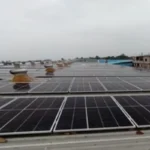
How to Choose Solar Panel Mounting Structures for Home, Industry & Commercial Installations
Choosing the right mounting structure is crucial for solar panel efficiency and durability. This blog explains various types of mounting structures for residential, industrial, and commercial solar installations, including rooftop, ground-mounted, and hybrid systems, to help you make an informed decision.
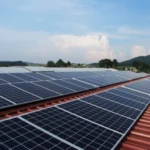
What Does 1 kWp Mean in Solar Power Systems?
1 kWp is a standard unit used to measure the capacity of a solar power system under ideal conditions. This guide explains what 1 kWp means, how much energy it produces, and why it matters for system sizing.